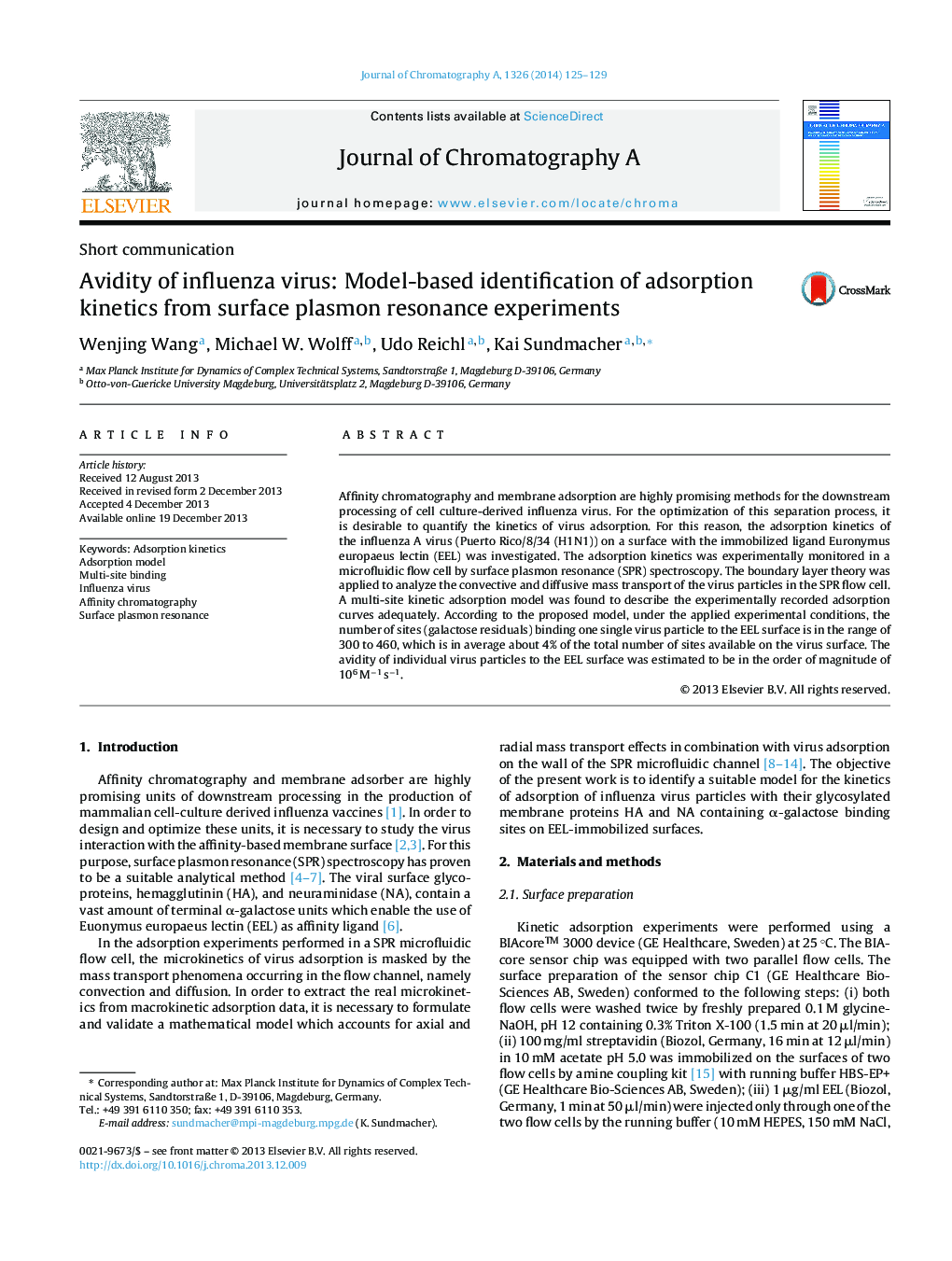| Article ID | Journal | Published Year | Pages | File Type |
|---|---|---|---|---|
| 1200794 | Journal of Chromatography A | 2014 | 5 Pages |
•The kinetics of the avidity-based adsorption of influenza virus particles could be monitored by surface plasmon resonance (SPR) using Euronymus europaeus lectin (EEL) as ligand.•The multisite adsorption model proposed first by McGhee and von Hippel is suitable for describing the adsorption kinetics of influenza virus particles on the affinity based surface.•Based on the proposed model, the avidity of individual virus particles on the EEL surface was estimated to have the magnitude of 106 M−1 s−1.•About 4% of all galactose residuals on the surface of an individual virus particle were found to be involved in the binding to the affinity surface.
Affinity chromatography and membrane adsorption are highly promising methods for the downstream processing of cell culture-derived influenza virus. For the optimization of this separation process, it is desirable to quantify the kinetics of virus adsorption. For this reason, the adsorption kinetics of the influenza A virus (Puerto Rico/8/34 (H1N1)) on a surface with the immobilized ligand Euronymus europaeus lectin (EEL) was investigated. The adsorption kinetics was experimentally monitored in a microfluidic flow cell by surface plasmon resonance (SPR) spectroscopy. The boundary layer theory was applied to analyze the convective and diffusive mass transport of the virus particles in the SPR flow cell. A multi-site kinetic adsorption model was found to describe the experimentally recorded adsorption curves adequately. According to the proposed model, under the applied experimental conditions, the number of sites (galactose residuals) binding one single virus particle to the EEL surface is in the range of 300 to 460, which is in average about 4% of the total number of sites available on the virus surface. The avidity of individual virus particles to the EEL surface was estimated to be in the order of magnitude of 106 M−1 s−1.
